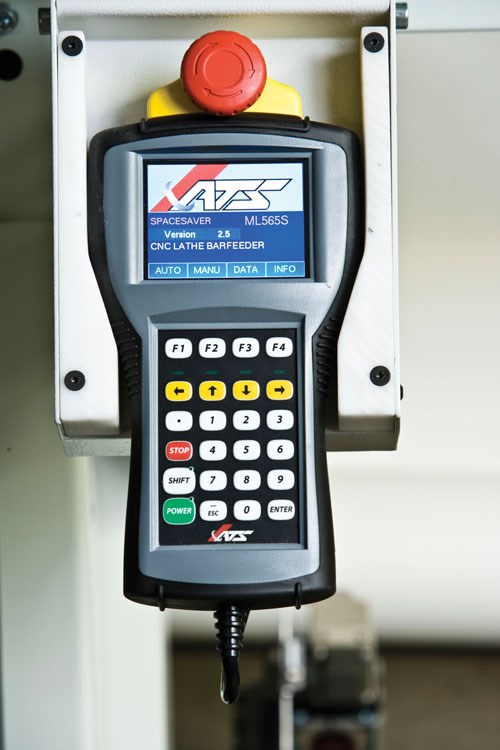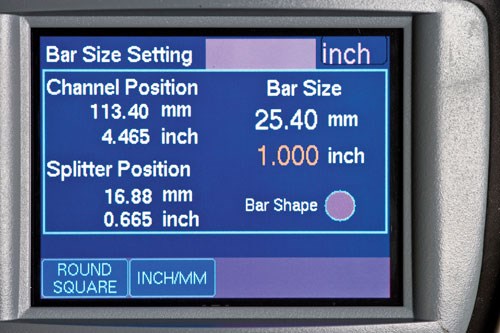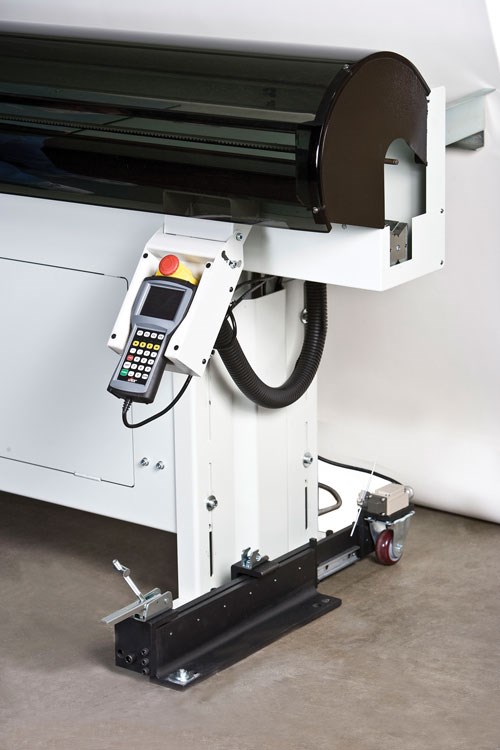Reestablishing A Name In Bar Feeders
To keep its well known line at the forefront of the minds of those in the market for a bar feeder, this company completely redesigned its product. Features such as a see-through cover and Direct Connect programming through the machine tool's CNC demonstrate the results of this focused effort.
A well-established company name or product can go a long way toward bringing in business. A strong quality reputation is often all it takes to gain a customer’s trust. And when a machine shop or a firm supplying it rests too long on its reputation and does little to change with the times, the needs of the customer can quickly stretch beyond the supplier’s means.
This scenario is exactly what ATS Systems set out to avoid as it brought together under one organization the ATS Workholding and SMW Systems names. Individually, these firms had established reputations for providing collet chucks, workholding and automation systems, including bar feeders and gantry-style part loaders, for lathes. To maintain its reputation as a quality, relevant solution provider, the company needed new products that proved it.
According to Vice President Ken Erkenbrack, head of the Automation Division, a product of particular significance is the ML Series bar feeder. “We took an existing product through extensive design changes to bring it directly in line with what our customers were requesting,” Mr. Erkenbrack says. “With the exception of the base, which is essentially the same, we have totally retooled this bar feeder and designed new software for easier, more intuitive operation.”
The redesign began in early 2007. A group of company engineers were pulled aside and instructed to spend 6 to 12 months focusing solely on the upgrade. They started going through all of the electronics and components, figuring out what they could do differently to deliver a top-of-the-line product. Some of the changes were ideas that had been on the back burner for some time; some were based on specific customer requests; some were developed through intense scrutiny and ordinary tinkering with different motors and controls. The result is a bar feeder that the company feels can help solidify its reputation.
Visually, one of the more apparent changes to the bar feeder is the see-through cover, made of Lexan polycarbonate, the same material used for fighter jet cockpits. It is tinted, but allows the operator to safely see completely inside.
To give the bar feeder a technological advantage, company engineers added Direct Connect, which allows the machine tool’s CNC to directly control the bar feeder. All setup parameters, such as length of bar and bar diameter, are included in the CNC program itself, so the operator does not need to learn to operate the bar feeder’s control. Using the CNC program to control the bar feeder aids in untended operation. Multiple parts can be programmed, running a certain quantity of one part and then automatically switching over to the next series. Direct Connect does not add additional cost, but requires a compatible CNC lathe control model.
The handheld control gives the operator another setup option. “Although using the bar feeder’s handheld control is not necessary, many operators find it easier because of its intuitive programming,” says Jeff Brown, director of business development. “Commands are in layman’s terms. The Setup Wizard provides a series of prompts to guide the operator through the process.” Another advantage of using the handheld unit is that it allows the operator to move about the bar feeder and carry the control while seeing what is happening inside, up close.
Keeping in mind further the convenience of the operator, all models in the ML Series automatically adjust all mechanical items for each setup. For example, entering the bar diameter automatically adjusts the height of the bar-guiding V-channel. It also automatically adjusts the torque of the pusher servomotor. Mr. Erkenbrack explains, “If you’re pushing a very small bar, the unit knows to reduce the torque. One of the main objectives was ease of use.”
Sliders now come standard on certain models of the bar feeders. “Customers requested this feature because, with today’s machine tools, the headstock is sometimes buried so far into the cabinetry of the machine that the spindle filler tube is hard to get to without moving the bar feeder out of the way,” Mr. Erkenbrack says. The X-axis slides allow 18 inches of movement and allow locking back down in place for stability during operation. The slides are of a telescoping type, so they pose no trip hazard when the bar feeder is in its operation position, addressing a concern customers had shared about competitive slide designs.
Historically, ATS bar feeders were assembled in the Czech Republic, but in an effort to gain more control over product development, assembly and shipping, all electronics and major components are now assembled into the completed product in the U.S. With local ownership of product development and assembly, design changes can now be made far more efficiently. The efforts to provide the customer what it needs put ATS on the path to establishing another strong foothold in the bar feed market.
Related Content
Bar Feeder Offers Simple, Fast, Silent Automation
PMTS 2023: Bucci Industries’ Next 25 bar feeder offers high rotational speeds (more than 10,000 rpm) and fast, unattended bar changes with high indexing and silent performance.
Read MoreBar Feeder for Sliding Headstock Lathes Enables Higher RPMs
PMTS 2023: The LNS GT 342 automatic magazine bar feeder is designed to enable fast and easy diameter changeovers and improved productivity.
Read MoreRead Next
The Long And Short Of Bar Feeder Selection
For many shops, the decision comes down to a 4- or 12-foot-capacity magazine-style bar feeder. Here are some guidelines for choosing between them.
Read MoreBar Feed Considerations For High-Speed, Lights-Out Machining
There are design elements incorporated into today’s 12-foot, magazine-load bar feeders that make them more useful for high-speed and untended operation. This article looks at some aspects to consider before purchasing a 12-foot bar feeder.
Read MoreDo You Have Single Points of Failure?
Plans need to be in place before a catastrophic event occurs.
Read More
























